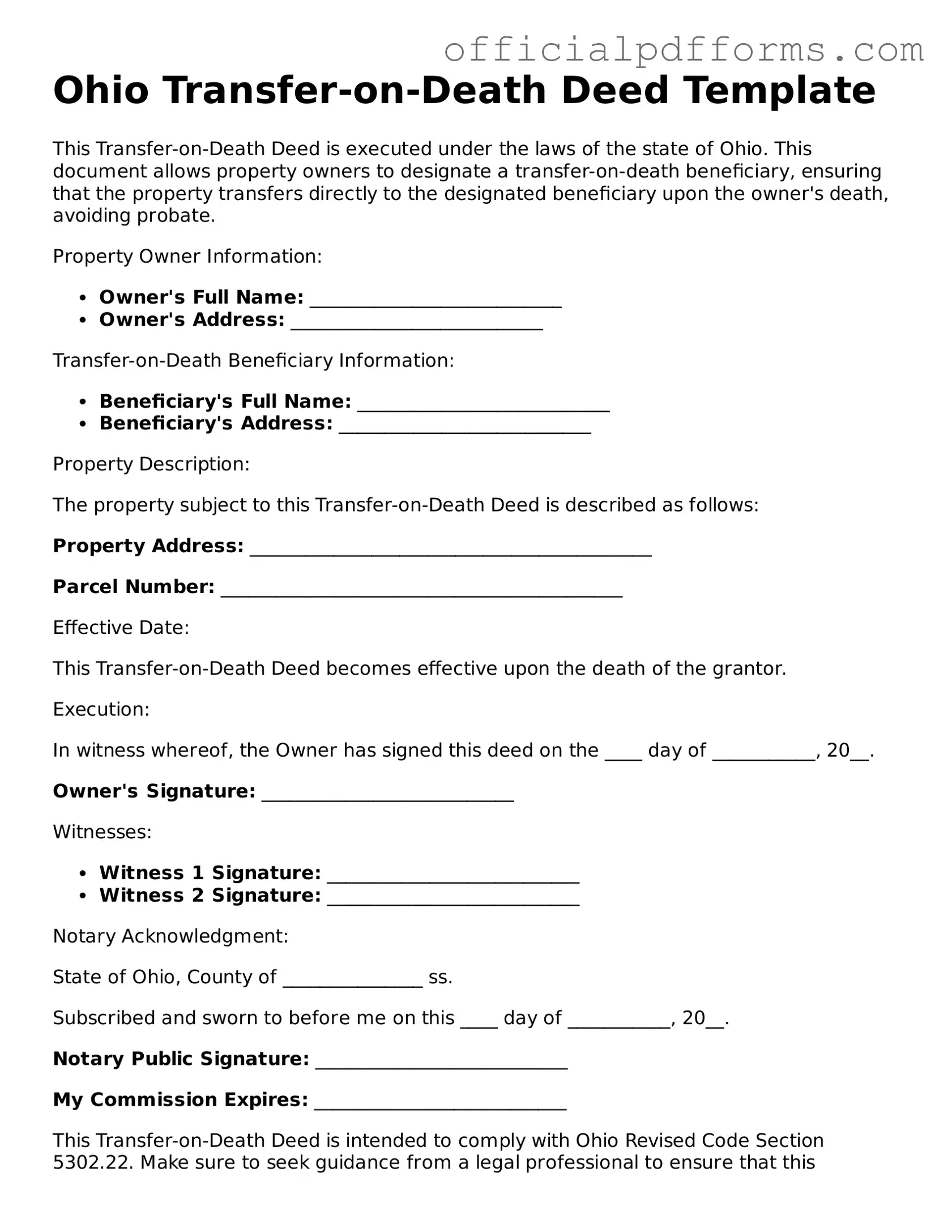What is a Transfer-on-Death Deed in Ohio?
A Transfer-on-Death Deed (TOD) is a legal document that allows a property owner to designate one or more beneficiaries who will automatically receive the property upon the owner's death. This process helps avoid probate, making the transfer of property smoother and quicker for the beneficiaries. The deed must be recorded with the county recorder's office to be valid.
Who can create a Transfer-on-Death Deed?
Any individual who is the sole owner or a co-owner of real estate in Ohio can create a Transfer-on-Death Deed. The property owner must be of sound mind and at least 18 years old. Additionally, the deed can be used for various types of property, including residential, commercial, and vacant land.
How do I complete a Transfer-on-Death Deed?
To complete a Transfer-on-Death Deed, follow these steps:
-
Obtain the appropriate form from your county recorder's office or a reliable legal forms website.
-
Fill in the required information, including the property description, your name, and the names of the beneficiaries.
-
Sign the deed in front of a notary public.
-
File the completed deed with the county recorder's office where the property is located.
Make sure to keep a copy of the filed deed for your records.
Can I change or revoke a Transfer-on-Death Deed?
Yes, you can change or revoke a Transfer-on-Death Deed at any time before your death. To do this, you must complete a new TOD deed or a revocation form and file it with the county recorder's office. It is important to ensure that any changes are properly recorded to avoid confusion later.
What happens if a beneficiary predeceases me?
If a beneficiary named in your Transfer-on-Death Deed passes away before you, their share of the property will generally go to their heirs, unless the deed specifies otherwise. If you want to ensure that the property goes to someone else in such a case, consider updating the deed to reflect your wishes.
Are there any tax implications with a Transfer-on-Death Deed?
Generally, transferring property through a Transfer-on-Death Deed does not trigger immediate tax consequences for the property owner. However, beneficiaries may be responsible for property taxes once they inherit the property. It is advisable to consult a tax professional to understand the specific implications based on your situation.
Is legal assistance necessary to create a Transfer-on-Death Deed?
While it is possible to create a Transfer-on-Death Deed without legal assistance, consulting with an attorney can provide peace of mind. An attorney can help ensure that the deed is completed correctly and complies with Ohio laws. This can prevent potential issues in the future and ensure that your wishes are clearly articulated.
